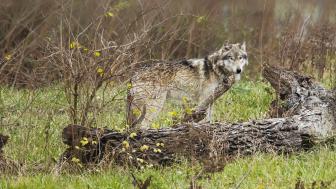Ask A Pro: Scott Kelby Answers Your Photography Questions

Hi everybody! Welcome to my new Q&A column here in Shutterbug—a magazine I’ve been reading, and been a fan of, for so many years—so it’s truly an honor to be here with you. I invite you to send in your questions to editorial@shutterbug.com (with “For Scott Kelby” as the subject line), and I’ll do my best to answer them in Ask a Pro. Now on to this month’s questions.
Q. I have a very simple question that can hopefully be answered with a “Yes” or a “No.” Is a speedlight a strobe?
A. Yes. Well, kinda. Actually, no. Crud (I guess it’s not a simple yes or no answer). I would say that speedlights are more commonly referred to as a “flash” or a “hot shoe flash” and when you hear someone saying “a strobe” they would usually be referring to a studio light. I did a quick test by going to B&H Photo’s website and typing in “strobe” and what came up were nothing but studio lights (or studio lights with battery packs for location shooting). When I type in flash, it’s nothing but hot shoe flash units and accessories, so…ya know…that’s pretty much it.
Q. I’m thinking about subscribing to Adobe’s Photographer’s Bundle (Photoshop and Lightroom), but I heard you have to be connected to the Internet all the time, and there are a lot of times I wouldn’t be able to, and I can’t chance being locked out of my applications. Is there a way around this?
A. The good news is: you don’t have to be connected to the Internet all the time (that’s kind of an urban legend at this point). It generally just checks once a month to make sure you’re still an active member of the plan, and honestly I haven’t heard of a single person having an issue with that once-a-month check-in, so I doubt you’ll ever have an issue with it—unless, of course, you don’t ever get on the Internet. Then, and only then, it might be an issue.
Q. Why does Lightroom change my Raw image shortly after it loads and can I turn that auto adjustment off?
A. This is one of my “most asked Lightroom questions”: It’s actually not an auto adjustment. What you’re seeing is the JPEG preview appear on screen first—this is the same image you saw on the back of your camera, which has already been sharpened, had contrast added, is more vibrant, etc., inside your camera. Then a few seconds later, it updates to show you the actual Raw photo, which has none of that stuff added (it’s just the Raw untouched photo straight out of the camera, so it looks kinda flat without all that contrast, sharpening, and stuff added). The idea is, of course, that you’ll add that stuff yourself in Lightroom (that way, you get the amounts you want, rather than having the camera decide all this for you). So, am I saying that JPEG photos generally look better coming right out of the camera than Raw images do? Well…yes.
Now, there is a way to get really close to that JPEG look for your Raw images. Here’s what to do: (1) Go shoot the typical thing you do, but switch your camera to shoot in Raw + JPEG mode. (2) Import both the Raw and JPEG images into Lightroom so they are side by side. Now, click on the Raw photo and in the Develop Module go to the Camera Calibration panel, where you’ll see a “Profile” pop-up menu. Try all of them to find the one that makes your Raw image most like your JPEG image. You also might have to tweak the Exposure slider or Contrast slider until it looks pretty much like the Raw image (you’ll have to toggle back and forth between the two files to compare them). Now save those settings as a preset (in the Preset panel), so you can make your Raw image look like the JPEG with just one click (you can even apply this preset during import so they all come in looking like your JPEG from the start). Hope that helps.
Q. What would be the best walk-around lens to use when traveling? It’s a bit much lugging a lot of gear all over the place.
A. Totally agreed—it actually starts to mess up your vacation at some point. So for the past few years I’ve tried to stick with just one lens, because even if you just take two, I can guarantee you that whichever lens you have attached right now will always be “the wrong lens” for what you’re standing in front of, so you’ll spend your day swapping lenses (and carrying an extra lens, which means carrying a camera bag, which is a pain). If I’m shooting with a full-frame body, I go with a 28-300mm lens. That way I can capture everything from wide angle to long zoom without ever changing lenses. However, if I’m shooting with a cropped sensor, then it’s an 18-200mm (which is approximately the cropped sensor equivalent). Try that “one lens that does everything” range once and you’ll always use it (and you’ll regret every time you bring a second lens—well, at least I do).
Q. We have a Nikon D300S DSLR. We have tried to shoot video in portrait mode numerous times and it only lets us shoot in landscape. Is there a secret to shooting in portrait?
A. Here’s what I recommend: Don’t shoot video in Portrait (tall) mode. People who view the video will just get angry (especially if you post it online). I am not making this up either. Video was designed to be widescreen, and when you post a video that is shot in tall format, you will get buried on social media, so please do yourself a favor and don’t try to “beat the system”—just shoot wide and you’ll live a happier life (at least in the short term).
Scott Kelby is a photographer, Photoshop Guy, award-winning author of more than 50 books, and CEO of KelbyOne, an online education community dedicated to helping photographers take the kinds of images they’ve always dreamed of. You can learn more about Scott at his daily blog (scottkelby.com), or follow him on Twitter: @scottkelby.
(Editor’s Note: Ask a Pro is a new Q&A column from professional photographer, writer, and educator Scott Kelby. Scott is here to answer all your photography-related questions, so if you have something you’d like to know, e-mail him at editorial@shutterbug.com with “For Scott Kelby” as the subject line and your query could be featured in the next edition of Ask a Pro.)
- Log in or register to post comments

















































